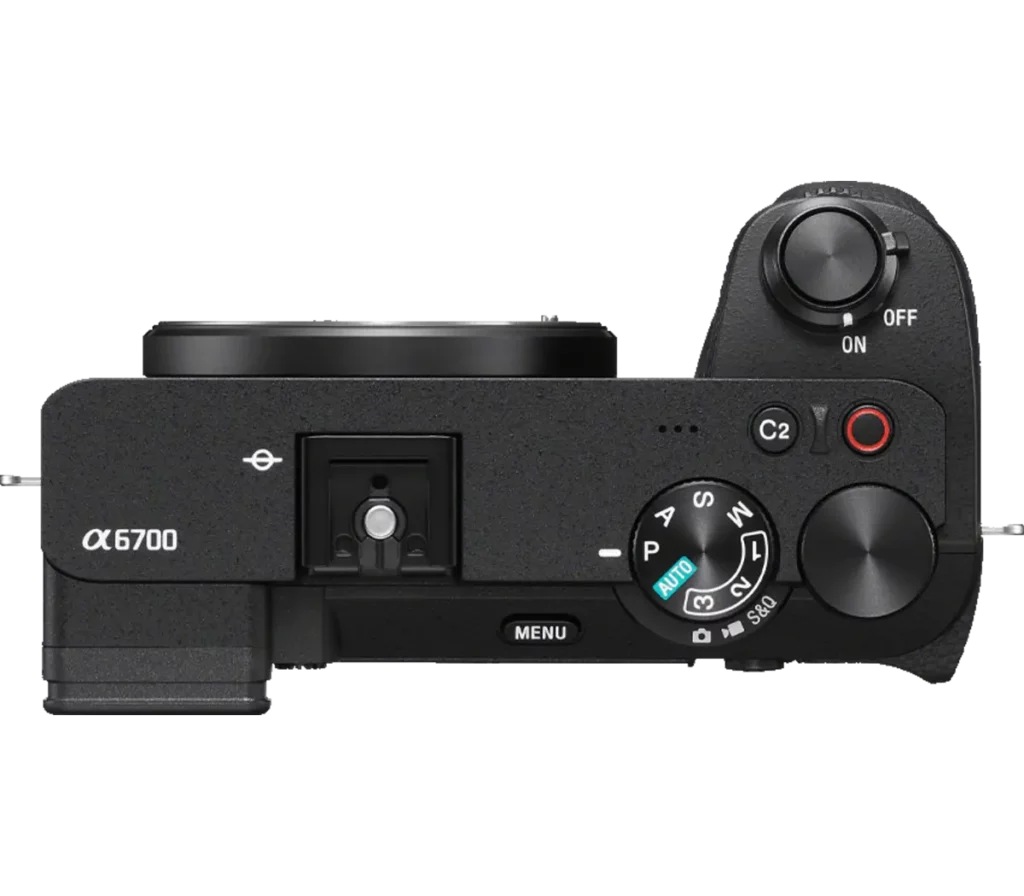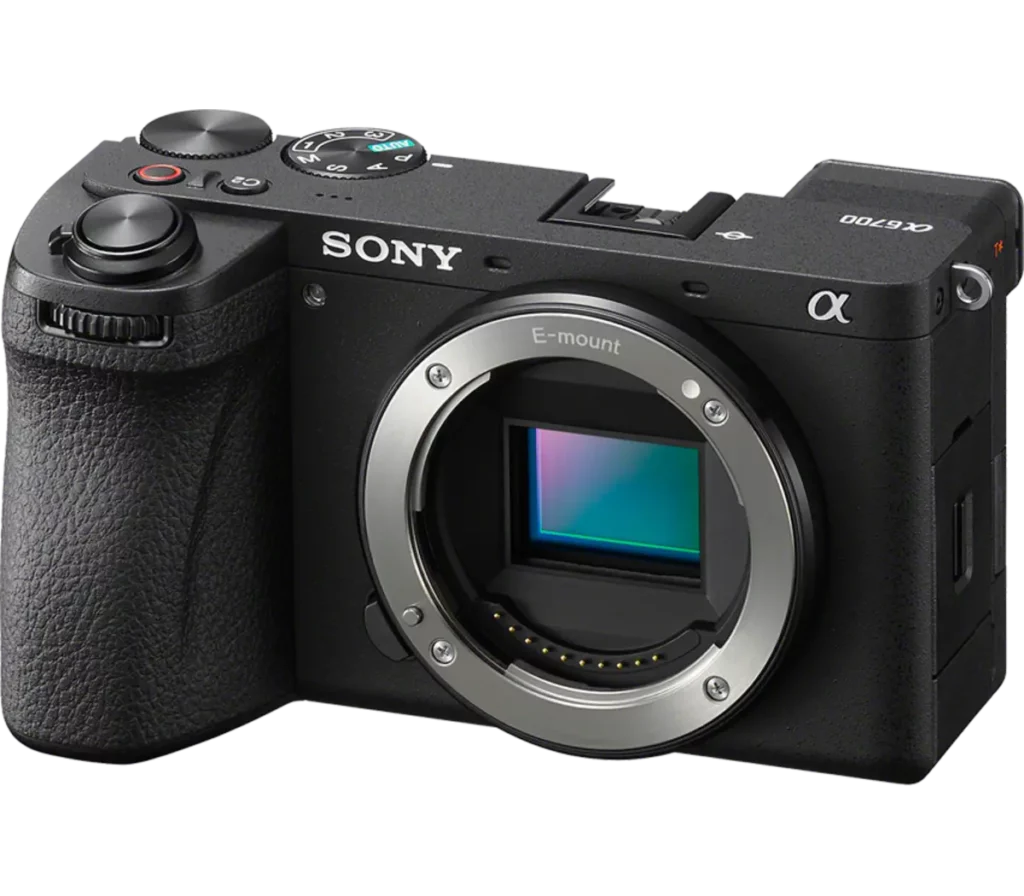Even though most of us use our smartphones to take photos, there is no denying the benefit of a professional camera to capture great photos and videos. The advent of mirrorless cameras has revolutionized the world of photography and videography, offering a compelling alternative to traditional DSLRs. These cameras are celebrated for their compact design, advanced features, and exceptional image quality. This article delves into how mirrorless cameras work and highlights the standout features of one such model: the Sony A6700.
How a Mirror Camera Works
Traditional DSLR (Digital Single-Lens Reflex) cameras are renowned for their image quality, versatility, and robustness. At their core, DSLRs use a mirror and prism system to provide a direct optical view through the lens. Here’s a step-by-step breakdown of the process:
- Light Entry: Light enters the camera through the lens. This is the beginning of the journey for the light that will eventually form the photograph.
- Reflection: The light hits a mirror positioned at a 45-degree angle inside the camera body. This mirror reflects the light upwards towards the viewfinder.
- Pentaprism or Pentamirror: The reflected light then encounters a pentaprism (or pentamirror in some entry-level models). This optical device reorients the light so that the image appears correctly oriented in the viewfinder. Without this, the image would appear upside down or reversed.
- Viewfinder Display: The light reaches the viewfinder, allowing the photographer to see exactly what the lens sees. This direct optical path is a hallmark of DSLR cameras, providing a clear, lag-free view of the subject.
- Exposure: When the shutter button is pressed, the mirror flips up, allowing light to pass directly to the image sensor (or film in analog cameras). The shutter then opens and closes to expose the sensor, capturing the image.
- Return: After the exposure, the mirror returns to its original position, and the cycle can begin again.
How a Mirrorless Camera Works
Unlike DSLRs, mirrorless cameras do not have a mirror or prism. This fundamental difference simplifies the internal mechanics of the camera and leads to several advantages. Here’s a breakdown of how mirrorless cameras function:
- Light Entry: Light enters through the lens and directly reaches the image sensor, as there is no mirror to redirect it. This is a key difference from DSLRs, where the light first hits a mirror.
- Electronic Viewfinder (EVF) or LCD Screen: Mirrorless cameras use an electronic viewfinder or the camera’s LCD screen to display the image. The image sensor continuously captures the scene and sends the live view to the EVF or LCD. This allows photographers to see exactly what the sensor sees, including exposure, white balance, and depth of field adjustments in real time.
- Autofocus System: Mirrorless cameras typically use contrast-detection or hybrid autofocus systems (combining phase-detection and contrast-detection). This allows for fast and accurate focusing, even in challenging lighting conditions.
- Image Capture: When the shutter button is pressed, the camera captures the image directly onto the sensor. Since there is no mirror to flip up, mirrorless cameras often have faster continuous shooting speeds and quieter operation compared to DSLRs.
- Image Processing: The captured image is processed by the camera’s image processor, which handles tasks such as noise reduction, color correction, and image sharpening before saving the final image to the memory card.
Advantages of Mirrorless Cameras
- Compact and Lightweight: Without the need for a mirror and prism system, mirrorless cameras are generally smaller and lighter than DSLRs. This makes them more portable and convenient for travel and everyday use.
- Real-Time Exposure Preview: The electronic viewfinder and LCD screen provide a real-time preview of how changes in settings will affect the final image. This helps photographers make more informed decisions about exposure, white balance, and other settings.
- Faster Shooting Speeds: The absence of a mirror allows for faster continuous shooting speeds and reduced shutter lag. This is particularly beneficial for capturing fast-moving subjects in sports and wildlife photography.
- Improved Autofocus: Mirrorless cameras often feature advanced autofocus systems with a high number of focus points covering a large area of the frame. This results in quicker and more accurate focusing.
- Versatile Lens Compatibility: Many mirrorless cameras are designed with shorter flange distances, allowing for the use of adapters to mount lenses from various other systems. This gives photographers greater flexibility in their lens choices.


The Sony A6700 is a prime example of the capabilities of modern mirrorless cameras. Here are some of its standout features:
- Advanced Autofocus: The A6700 features a highly sophisticated autofocus system that uses artificial intelligence for real-time tracking and eye autofocus. This ensures sharp focus on subjects, whether they are still or in motion.
- 24.2 MP APS-C Sensor: The camera is equipped with a 24.2 megapixel APS-C Exmor CMOS sensor, providing high-resolution images with excellent dynamic range and low noise, even in low-light conditions.
- BIONZ X Processor: The BIONZ X image processor offers quick processing speeds, superior image quality, and impressive performance in continuous shooting modes and uses AI to track images in real time.
- 4K Video Recording: The A6700 supports 4K video recording with full pixel readout and no pixel binning. This results in high-quality video with sharp details and vibrant colors. In the past, someone would purchase one camera for photography and another for videography. Now, this one camera serves both audiences.
- Electronic Viewfinder: The high-resolution electronic viewfinder provides real-time previews of how settings adjustments will affect the final image, offering a significant advantage over traditional optical viewfinders.
- Connectivity: The camera includes built-in Wi-Fi and Bluetooth, allowing for easy sharing and remote control via a smartphone or tablet.
Conclusion
Mirrorless cameras represent a significant advancement in photography and videography technology. By eliminating the mirror mechanism found in DSLRs, they offer a more compact, versatile, and feature-rich option. The Sony A6700 exemplifies the strengths of mirrorless design, combining cutting-edge technology with ease of use to deliver exceptional photographic performance. Whether you’re a professional photographer, videographer, blogger or an enthusiast, the capabilities of mirrorless cameras like the Sony A6700 make them a compelling choice for capturing stunning images and videos, and we’ll soon dive into the examples we create on this site and on our YouTube channel.
